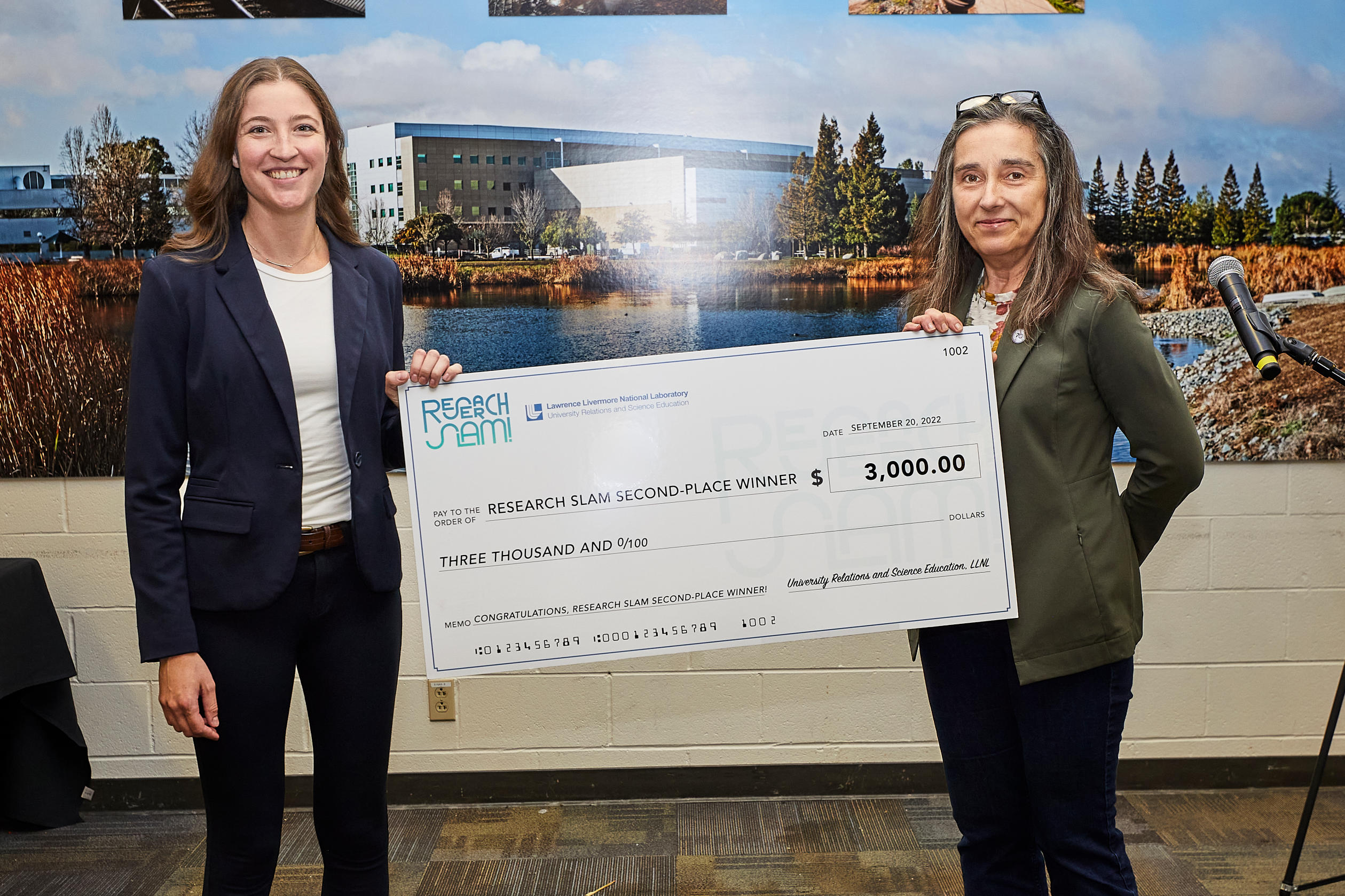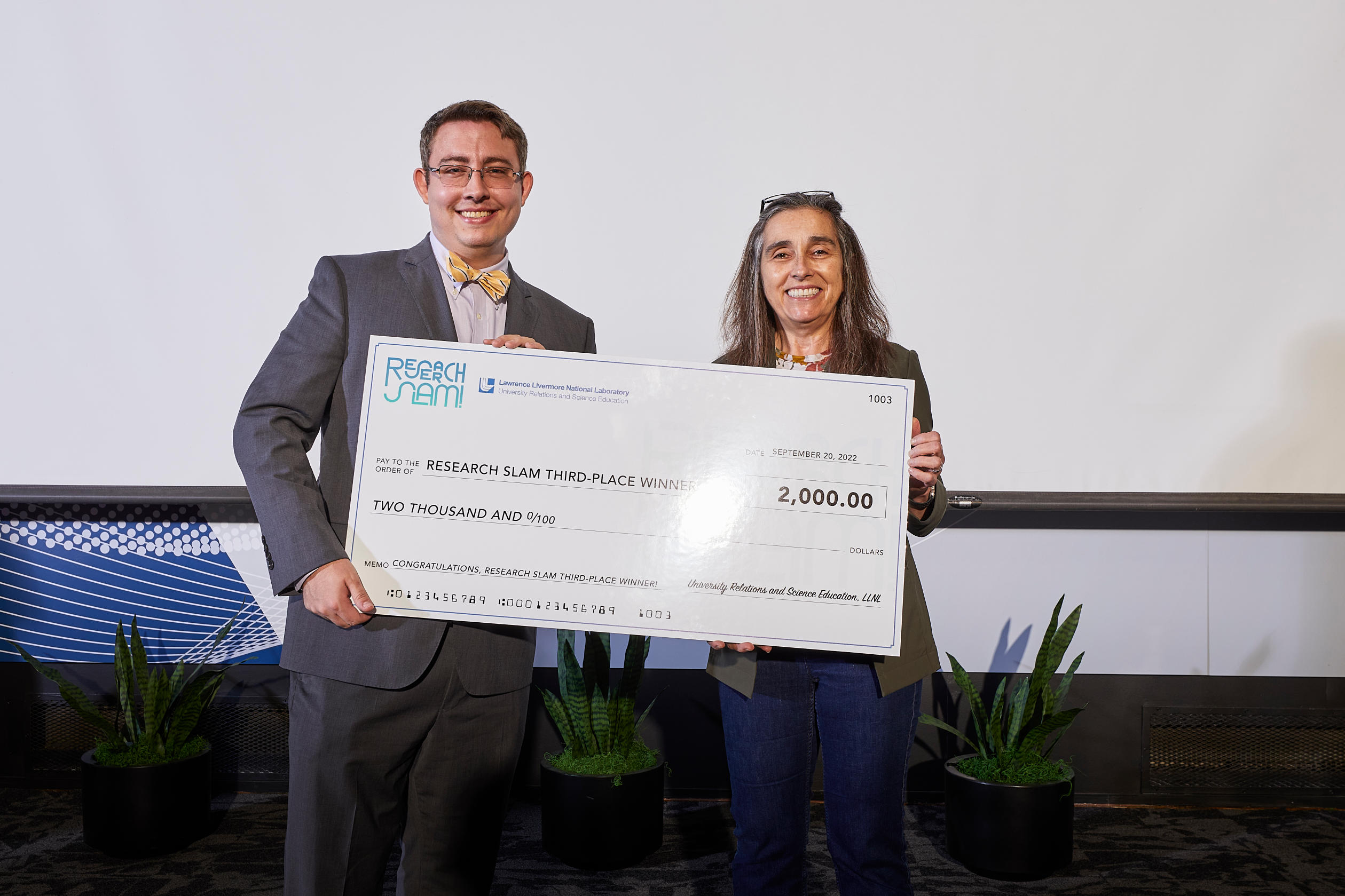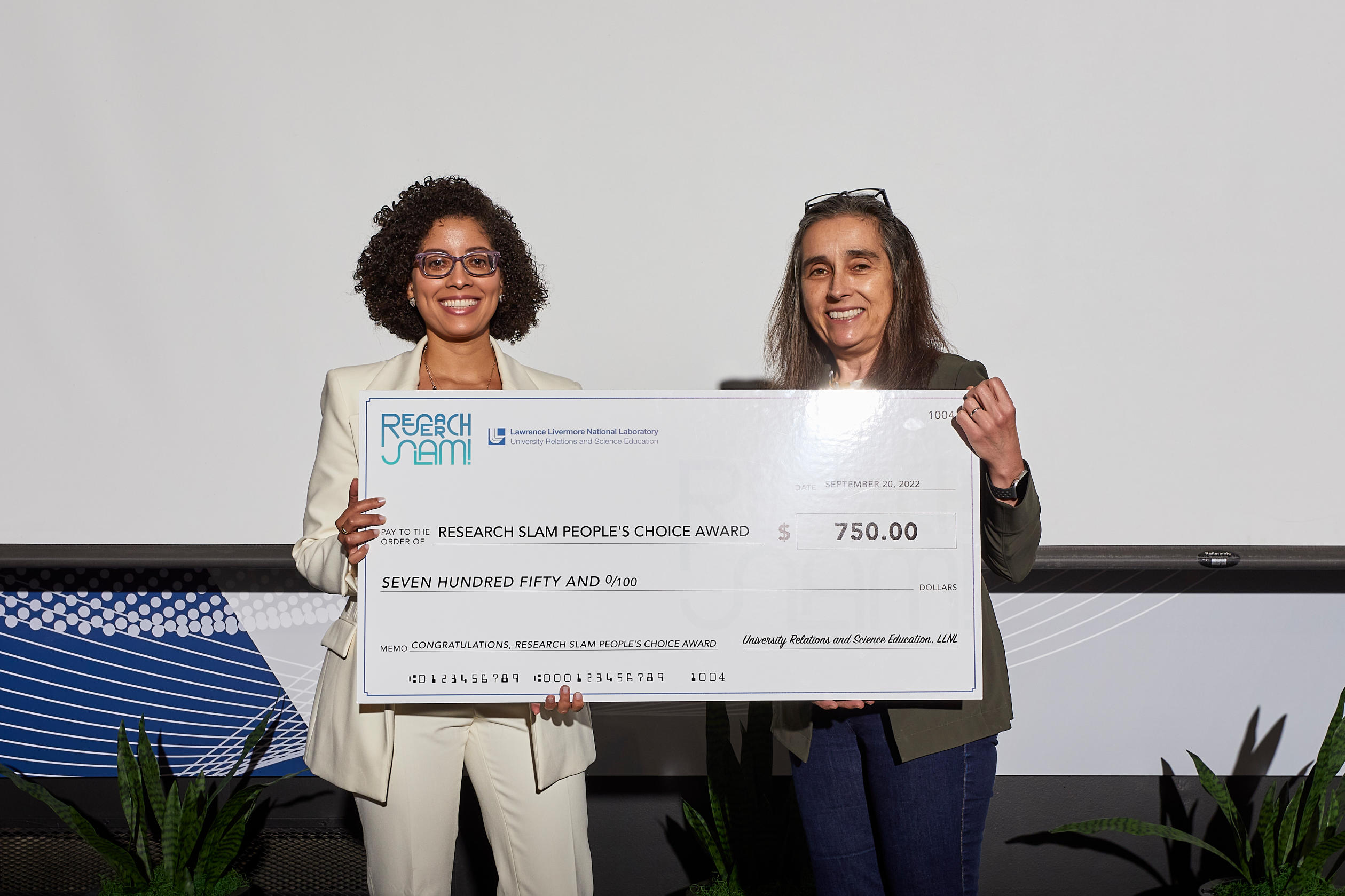PLS postdocs to compete in the 2022 Bay Area Research Slam
 (Download Image)
(Download Image)
From left to right: Jennifer Chlebek, Christopher Miller, and Mariana Reale Batista.
On September 20, LLNL hosted its annual Postdoc Research Slam. This Lab-wide competition encourages postdocs to showcase their research in a three-minute presentation that answers the question, “Why is my research important?” The event gives postdocs the opportunity to improve their communication and speaking skills and challenges them to articulate their research in an easy-to-understand manner.
Nine postdocs were selected to compete in the final round of the event, at which three were chosen by a panel of judges to move onto the Bay Area Research Slam. As in previous years, researchers from the Physical and Life Sciences (PLS) Directorate were widely represented at the event. Of the three finalists, second place went to Jennifer Chlebek of PLS’s Biosciences and Biotechnology Division and third place to Christopher Miller of PLS's Materials Science Division (MSD). In addition to the three finalists, the live and virtual audience voted for their favorite presenter, awarding MSD’s Mariana Reale Batista with the People’s Choice Award for the second year running. The event was held in-person and livestreamed, with nearly 200 viewers in total.
Genetically Engineered Microorganism: A Novel Solution or the Next Biothreat?
Jennifer is developing strategies to prevent the next Jurassic Park of bacteria from happening. During her slam presentation, she explained how scientists have the tools to modify the DNA of bacteria to give them new capabilities such as producing medicines for humans, delivering fertilizers to crops, or cleaning up oil spills in the ocean. However, releasing such genetically modified organisms (GMOs) into the environment could result in a biothreat. Jennifer said that, for example, if a biotech company modified the DNA of a bacteria to create a fertilizer, and the farmer mixed this GMO into the soil, the modified DNA could transfer into the native soil bacteria. This could result in overproduction of fertilizer and harm the crops.
Currently, Jennifer’s research focuses on a process called genetic entanglement to decrease the chances of an environmental contamination, such as this one. Using this novel technique, she can take the modified DNA and entangle it with a toxin. Then, if the modified DNA transfers into the native soil bacteria, the bacteria will produce this toxin and die, protecting the natural ecosystem. The results of Jennifer’s research show that genetic entanglement can reduce environmental contamination by 100,000-fold. Jennifer added, “In turn, my research will not only help our farmers but also bring us one step closer to widely using GMO bacteria safely for human benefit.”
From Microscale to Macroscale—Designing Better Explosives
Christopher kicked off his presentation with a cake metaphor—comparing baking a cake to designing new explosives. He explained that successful baking requires the right ingredients. Similarly, Chris posed the question, “How does modifying the ingredients affect an explosive’s output, especially when designing one for a particular purpose?”
One proposed idea is to incorporate miniature hollow glass beads, better known as microballoons, into explosive formulations to control the porosity. To test this theory, Chris used the LLNL hydrocode ALE3D to perform computer simulations to study how the quantity and size of the microballoons used would affect the explosive response. Through his simulations, Chris discovered that small microballoons resulted in small reactions and larger microballoons resulted in larger reactions. However, if the microballoon diameter increased too much, the total chemical reaction diminished. This suggests there is a hidden optimization, i.e., if the microballoons become too big, too much energy is required to collapse them.
Chris said, “Simulations like these can be used to test out other ‘recipes’ as well, such as changes to the microballoon material, wall thickness, shape, etc. Every single one of these variations is a new page in the cookbook.”
How 3D Printing Can Supercharge Your Life
What if batteries were a thing of the past? Mariana began her slam presentation with this intriguing question, explaining how supercapacitors can be used to charge electronics in seconds. She said, “Batteries rely on slow chemical reactions, whereas supercapacitors store energy through static electricity, like when you rub a balloon against your hair.” However, supercapacitors can only hold around five percent of the energy that a battery of equal weight can; thus, Mariana’s research aims to increase the energy storage capacity of supercapacitors.
Imagine a supercapacitor as a water tank. Inside the tank there is a porous material, full of positive and negative ions swimming around. To store energy, the ions need to penetrate the material. Unlike traditional supercapacitor designs, which require the ions to “search” for small windows in the porous material, Mariana’s research essentially “opens the flood gates.” To do this, she used an algorithm to create a unique supercapacitor design and 3D printed the supercapacitor using UV light. Tests reveal that this unique design makes it easier for the ions in the supercapacitor to penetrate deeper and faster, allowing it to store more energy than a supercapacitor with a traditional shape. Mariana says, “This is a huge step forward in solving our energy problems.”
As second and third place winners, Jennifer and Chris will move on to compete in the Bay Area Research Slam with winners from Lawrence Berkeley National Laboratory, SLAC National Accelerator Laboratory, and Sandia National Laboratory on October 20.
—Shelby Conn
Tags
Bioscience and BioengineeringBiosciences and Biotechnology
Advanced Materials and Manufacturing
Materials Science
Academic Engagement
Postdocs
Physical and Life Sciences
Featured Articles










